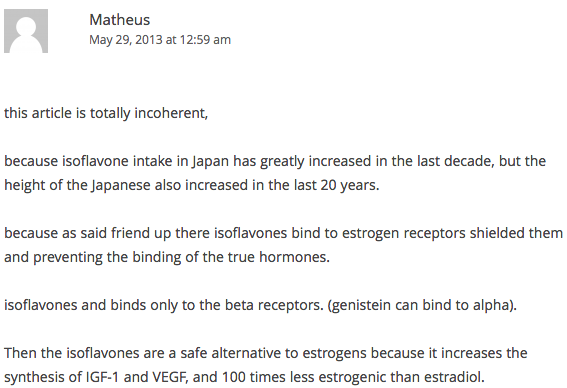Triptorelin Can Increase Adult Height For People Developing Precocious Puberty
Someone recently messaged me information about the existence of a type of drug called Triptorelin which is used by endocrinologists to help young children develop taller adult height. It did trigger my interest so I did only a little bit of research on this drug and these are 5 sources which had the most relevance to the effects of triptorelin on growth.
- Final height after long-term treatment with triptorelin slow release for central precocious puberty: importance of statural growth after interruption of treatment. French study group of Decapeptyl in Precocious Puberty
- Final height and timing of menarche after treatment for idiopathic central precocious puberty (CPP)
- My daughter & Triptorelin (Decapeptyl 3.75mg)?
- Three-month sustained-release triptorelin (11.25 mg) in the treatment of central precocious puberty
- Effect of GnRH Analogs Leuprolide-Acetate and Triptorelin on Bone Mineral Density in Girls with Central Precocious Puberty
The basic idea is that for a minority of females, they will experience something known as central precocious puberty aka CPP. The gonads will start releasing their steroids about 2-3 years earlier than was they are supposed to. The ultimate result is that the girls will end up with shorter than average final adult height. To inhibit the gonads of the female, the egg, from releasing too much of the steroid, which I believe is just estrogen, the medical researchers used this compound called Triptorelin.
We learn from the 2nd PubMed study that two groups were made, the control group and the group with the girls that were given the treatment. The dosage and timing was every 4 weeks at a dose of 3.75 mg. It was shown that the triptorelin could hold back the initiation of menarche by almost 1.4 years, when the experimental and control groups were compared. What is surprising with the 2nd study is that the average heights of the two groups tested had only about a 2.3 cm difference, which the researchers felt was statistically insignificant.
As for the 1st study, it was probably more insightful. The study was tested on both girls and boys. The Final Height aka FH was compared to control groups and what the predicted final adult height of the control groups would be. For the girls, the average difference was around 4.8 cm but the range of the differences was extremely large (even over 10 cm for certain subjects in the group). For the boys, the increase in height was even more noticeable. Of course, they were compared to the group of kids who did not get any type of GnRH Agonist treatment. Compared to the the predicted height before treatment, the actual increase in height was on average exactly where the predict height was calculated to be.
What is probably most interesting is that apparently triptorelin can actually have a detrimental effect if the treatment is given after a certain age, specifically about at age 11 for the girls.
Beyond these few studies, there are commercial viability in the drug for children who are noticeably shorter but have not gone through puberty yet. The company called Debiopharm Group has been working on the drug. The website for Debiopharm Group which showed that…
January 13, 2014 – Debiopharm Group™ (Debiopharm), a Swiss-based global biopharmaceutical group of companies with a focus on the development of prescription drugs that target unmet medical needs and companion diagnostics, announces that it has completed the recruitment of patients for its Phase III clinical study in Central Precocious Puberty (CPP) with triptorelin 22.5 mg.
My personal opinion is that while triptorelin may be useful, we maybe should look into the dozen other compounds we have already found which is probably more effective in inhibiting the stunted growth in children. Triptorelin is not the best compound to use since its effects is very depend on the age of the kid for when they start getting the treatment.
For us, as adults, this type of synthetic compound, which is a type of GnHR agonist, is not useful. If it is going to be successful in some type of effect, you want to start on it as early as possible, and quit using it around the age of 12.0-12.5 years of bone age. The source of this info was from the study “Analysis of the factors affecting auxological response to GnRH agonist treatment and final height outcome in girls with idiopathic central precocious puberty“


